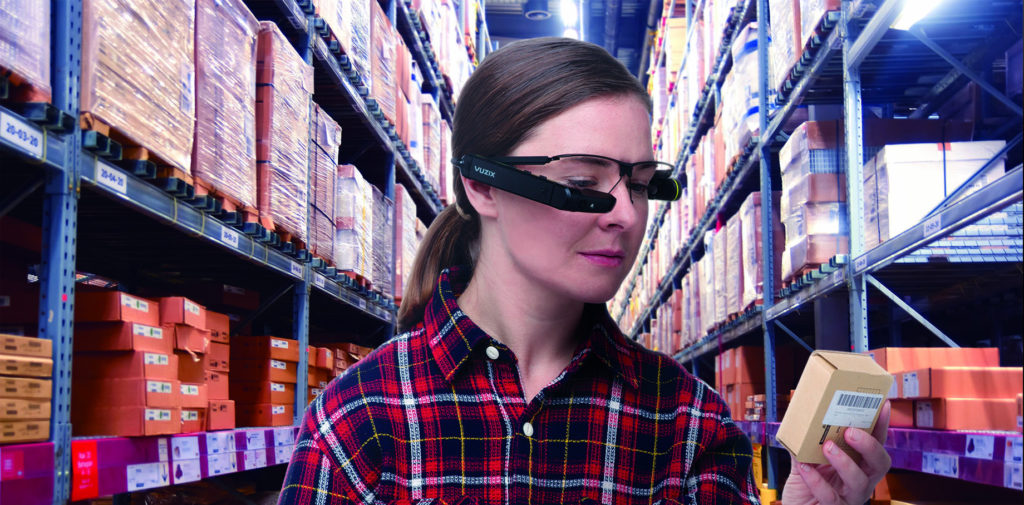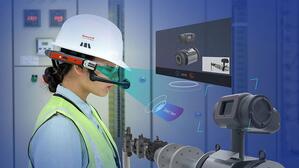Continuing education from Virtual Reality to Augmented Reality: Why combining VR and AR boosts training ROI for enterprise
Virtual and Augmented Reality have been getting a lot of press lately. Enterprise organizations are actively deploying both technologies in different ways, and seeing great results from these separate projects. The question now: is it time to stop treating Virtual Reality (VR) and Augmented Reality (AR) as independent entities, and start to leverage their potential as partners in one continuous learning journey?
Typically, VR and AR are applied to drive different outcomes and are managed in silos within a company. For instance, VR has seen increased usage in enterprise training. Companies are able to provide more immersive, engaging training with VR for results like increased retention, reduced speed to competency and allowing learners to practice in a safe environment.

Augmented Reality (AR) has also started to see expanded deployment in the enterprise. Using AR smart glasses, companies have been able to reduce the amount of rework needed and eliminate a majority of errors. Even more, AR can also increase confidence in users and eliminate the need for experts to travel when they can help remotely.
Both technologies have enabled companies to expand and supplement their training to help users continue to learn and grow on the job. But they’re still often used in isolation. If companies start to apply these technologies as complements to each other, rather than separate implementations, they can see an even greater return on investment.
Here’s an example:
Imagine training on how to maintain a turbine engine.
In VR, you are presented with the engine and tools needed perform the work. Each 3D rendered component is placed together, visualizing how to maintain the engine.As the system walks you through the steps one-by-one to replace a part, you see the 3D components, use your virtual wrench to work on a part as the items and descriptions are highlighted and confirmed complete. Very effective and safe training. Then, a few weeks later, you are on the job wearing AR glasses that present your daily work instructions. When you get to a task you don’t remember from training, you are able pull up the identical 3D visuals and steps from the VR training, in the field to identify the physical object, and use the actual wrench from your toolbox to complete the steps. This guide now becomes your mobile assistant to help you complete the task properly and confidently. The key is: it’s been a continuous thread from your initial training to on-the-job use of that same turbine trainingg content, just applying a different immersive tool to facilitate the task needed at that moment.
Taking the time to define the full user journey with both VR and AR technologies in mind can help save time and money in the long run. The content creation can be the same for both, the short form steps walk users through the task one-by-one, and the visuals can be identical. Approaching the tasks, processes, and procedures as a single entity that can be used across both VR and AR can provide great advantages to extending the value of investments companies are already making, and provide on demand training for those tasks that have low retention rates.
Benefits of Mixing & Matching VR/AR:
The most obvious benefit is the cost of creating the content. If the steps are written in a single format and access from a central location, there is no need for duplicate work. The graphic assets can easily be used across the platforms as they use the same technology, tools, and resources to create and maintain.
Another benefit is consistency, by using the same steps and graphics no matter if the user is learning in VR or doing in AR, they receive the consistency in the instructions. A single source also ensures that once the step or graphic is updated both the training and supporting materials are in sync, again saving valuable time and money.

Combining the two is not without its challenges. Organizational structures are one. In many companies the training is owned by Learning and Development, while Operations owns the job support instructions. However, working together can be mutually beneficial. Sharing the costs can make it easier to gain approval or expand to a larger audience. Each group will also have their own metrics and goals, that when combined, can show greater value to the bottom-line. Finally, working together on the content will ensure consistent messaging and increase accuracy and coordination company-wide.
Other considerations will include the need to create a central database, work streams and platforms – likely involving other parties like IT and infrastructure. However, these elements can also provide great benefits to the bottom-line such as consolidating systems, reducing software licenses, and helping to push the overall implementation down the line faster.
Originally published on Lance-AR.com blog
